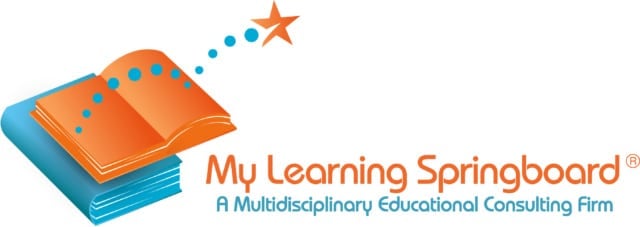
Neurodivergence: A Possible “Superpower”
That no two people have the exact same brain function or behavioral traits is what makes each of us unique, interesting, and valuable! Out-of-the-box thinkers and highly successful people are disproportionately neurodivergent, including Albert Einstein, Richard Branson, Barbara Corcoran, Charles Schwab, Octavia Spencer, Ingvar Kamprad, Elon Musk, Greta Thunberg, and Michael Phelps – the list goes on and on. We should look at neurodivergence as a potential “superpower” that we encourage and develop, and everyone’s neurodiversity should be celebrated and embraced. Notably, self-actualization requires all students to channel their intention, enhance their metacognition and executive functions, and develop compensatory strategies in order to harness those special strengths and manage any relative weaknesses.
In the age of AI and seemingly constant technology innovations, which has also become an everyday discussion, we focus on enhanced hardware, memory chips, processing speed, and programming. When your mobile phone or laptop struggles to keep up, you simply swap out the device or you make changes to specific components when you can. Wifi mesh systems, routers, or switches can be upgraded. Cables can be swapped and upgraded. Sluggish computers can be reset with a hard shutdown and restart. Human brains don’t come with these same options, and we wouldn’t want them to! Our neurodiversity is our strength and our humanity; it’s what makes us unique, and teamwork benefits from this variation in the human experience.
Think about the adults in your workplace or family with whom you collaborate. Think about those people with exceptional creativity, focus, attention to detail, ability to identify trends, recall of details, fast processing speeds, or visual processing skills. Based on your working understandings of various diagnoses (as related to neurodivergent learners) and neurodiversity at large, can you begin to speculate as to who might have ADHD, who might be dyslexic, who might be on the autism spectrum, or who might be highly intelligent but a slower processor? What strengths do each of these people bring to the table? Are they essential members of your team? Have they developed successful compensatory strategies in order to be successful? Have you developed strategies to differentiate your approach and collaborate successfully with each of these valued people?
Generational Differences
Learning differences exist on a continuum, and we’re firm believers in advocating for students of all ages and providing targeted instruction and justified accommodations to level the playing field for each student as appropriate. The fields of neurology, neuropsychology, and psychiatry have evolved tremendously since Gen X and Baby Boomers were kids. Evidence-based pedagogical research is abundant, and our sophisticated abilities to target and differentiate instruction are light years ahead of where they were. Millennials and Gen Z have particularly reaped the benefits of better informed teaching practices, such as the “science of reading” that we regularly hear about today, which helps to explain why we see so many more comprehensive evaluations, diagnoses, IEPs, 504 Plans, private school learning plans, and approvals from standardized testing publishers in today’s environment. Gen X and Baby Boomers, for the most part, simply had to cope and stay out of trouble, which had some pluses and some minuses.
Traps With Embracing Neurodiversity
Despite our progress, there are certain pitfalls that could hold any student back, regardless of their specific learning profile or neurodiversity, and we need to avoid these traps:
- Pathologizing – we can’t allow labels to dictate or define limitations or let students wallow in any “can’t-do” attitude. Self-fulfilling prophecies are dangerous and counter productive.
- Lowering the bar – maintaining high standards and a growth mindset coupled with compassionate, skillful, and targeted instruction is the only way forward. “Yet” is a small but powerful word and should be part of our key messages for all students.
- Avoiding hard work – confronting challenges regardless of your learning profile is the harder road to take, and it’s critical that we support our students in choosing this path. Leaning into hard work, developing compensatory strategies, and getting comfortable with the uncomfortable is the only way to shore up lifelong success. Building confidence is best done by building skills through a scaffolded approach, racking up accomplishments, and overcoming adversity. We need to respect differences in pace and an individual student’s ability to produce, thus success should be defined situationally and on an individual student basis. “Appropriately challenging” each student requires careful consideration and ongoing partnership between all adult stakeholders.
- Leaving it entirely up to schools – all schools have limited resources within the context of what they’re equipped to do and staffed to provide. Despite the best intentions or tuition cost, there is a breaking point to the level of customization and individualization that classroom teachers, learning specialists, or administrators can manage on their own, which holds true whether we’re talking about mainstream, specialized, or therapeutic school environments. We see that many independent schools, for example, are often quicker to suggest getting an evaluation than they are able to put all of those instructional recommendations and/or accommodations fully into place; an idealistic level of differentiated instruction requires parent partnership, creativity, and open-mindedness in addition to a considerable investment of time, energy, and resources.
- Analysis paralysis – perfect should not be the enemy of good. Parents know their children best. When a parent senses something isn’t right, they should follow their gut instinct. See something, say something, and DO something. Don’t wait for the school to come to your rescue. Don’t wait months to dig into remedial work while you organize a neuropsychological evaluation. Put a starting plan into action and then refine it as more data becomes available.
Rising To The Challenge
As we think about raising productive, successful, and happy human beings in today’s global economy, developing grit and character remains as important as ever. So is cultivating divergent, critical thinking. Embracing neurodiversity means embracing all of us. Each person is special. Each person brings a unique perspective to the table. Each person deserves to pursue life, liberty, and happiness as defined on their own terms. Each person deserves to have their strengths celebrated. Our differences really do make the world go round.
To be in a position to make informed and strategic decisions as students age up, we need to work together and hold our young people accountable in reasonable and supportive ways. Over-protecting, swooping in too quickly, or pathologizing their challenges cuts them down rather than building them up. Blaming schools isn’t constructive. Instead, we need partnerships. Independence, critical thinking, compassion, creativity, and grit must be cultivated over time in close partnership with all stakeholders involved in helping your student to succeed. Some “tough love” is appropriate so long as it’s informed, balanced, intentional, constructive, and delivered by trusted adults.
At My Learning Springboard, Faya and I continuously experience the joy associated with our students rising to the challenge, taking the harder road, overcoming challenges, and developing the necessary coping skills and compensatory strategies to self actualize. Growing with families over time informs this perspective, and it’s the most rewarding aspect of our work. We’re inspired everyday by exceptional students, parents, grandparents, educators, and colleagues across many related fields. Our collective neurodiversity and skillfulness coupled with a growth mindset, readiness to take action, collaborative spirit, transparent communication, and tenacity are key ingredients to our success.
Scheduling An Appointment
Whatever your need or wonder may be, please don’t hesitate to contact us. An initial planning meeting is usually the best way to get started. These meetings can be 30, 45, or 60 minutes by Zoom, by phone, or in person per a family’s preference. A single planning meeting allows us to talk more substantively about your family’s specific needs, priorities, and goals so that we can determine possible next steps. We’re committed to developing unique solutions for unique learners!
We look forward to hearing from you!
Warm regards,
Brad Hoffman and Faya Hoffman
Co-Founders and Learning Concierges, My Learning Springboard

